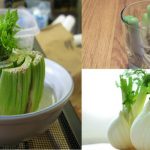Customized greenhouses greatly help to extend the harvest season for your fruits and vegetables. It’s a daydream come true for nurturing and protecting plants!
A small glasshouse can greatly enhance your backyard-gardening experience. Recently, a friend of mine purchased property that includes scattered outbuildings and a ramshackle greenhouse. When we were talking about it, she said, “I can’t believe what I just said ‘my greenhouse.’ It’s still hard to take in.”
With modern advances in plastics and polymers, having a personal greenhouse is easier and less expensive than it has ever been, and there are plenty of sizes, styles and materials to explore and experiment with.
What’s the big deal here?
Well, you can grow a garden, raise food and even sell your produce without a greenhouse. But! The same task can be accomplished in other, easier and more productive ways.
When you have a greenhouse, you realize why it is such a useful tool, how much more efficient you can be and how much stronger and healthier your plants can grow. Plus, the ways and styles of using it increase with each passing season.
Greenhouses can be used for starting plants, raising young plants to maturity and yield and protecting plants from inhospitable conditions. Depending on which of these activities you anticipate using the structure for, there are different shapes, sizes and materials you can choose from to suit your needs.
The less area you have to site a greenhouse, the more you’ll have to challenge your ingenuity when it comes to selection and use. Look around at your area and determine where you have the most, and best, space to place it in. If you have a yard in which to place a permanent structure, you can pick and choose from wood or metal frameworks with either glass or polycarbonate panels.
It’s ideal if you can situate your greenhouse in a south- or west-facing location that has either full sun or light afternoon shade. If you don’t have optimal sun exposure, you can compensate with grow lights. The more sun a greenhouse is exposed to, though, the warmer it will be able to get without supplemental heating.
Keep in mind that while full sun is great in the winter, full exposure during the summer can quickly turn a greenhouse into an oven. If you have full-sun exposure during the summer, ensure that your greenhouse will have fans or adequate airflow for ventilation or shades that can be lowered.
The greenhouse doesn’t have to be free-standing. You can place a “lean-to” against the house or against a tall, sturdy fence. If you have a shed or other structure, you can alter it to become part-greenhouse. If you don’t have such a structure (or the space for one), there are many options for temporary or short-term structures. These can be large enough to walk into and move around, but they can also be taken down, easily dismantled or folded up, and stored for the seasons when they’re not needed.
Watch your plants grow
While you can start seeds on windowsills, or under grow lights in a basement, the overall warmth and humidity that exist in a greenhouse, combined with all available ambient light, make a greenhouse an optimum tool for the purpose. You can start seeds or cuttings in pots or flats with good potting soil and grow them on counters or flat areas for later transplanting. Leave an area of the floor open to bare earth, and use it as a bed inside the structure. Now the house acts as protection for the native soil as well as the plants grown in it. This bed’s soil will be warmer and drier than if it weren’t protected and can be worked and planted sooner than an outside bed.
Sometimes greenhouses are used for the full lifespan of a plant, from seed to seedling to maturity. This protects the plant from pests’ attacks, helps keep away critters that predate it as a growing plant (thus weakening it), and contributes a controlled environment to encourage fruiting and ripening.
Greenhouse-type structures help stretch the season at the beginning and end, to get things out and up earlier, or extend harvest season longer.
Inside the plant house
Within any standup structure, there is more room to make use of than just the footprint and countertop areas (which are called “benches” in greenhouse-ese). Look around your space and see how much is available above and below the counter height. How strong is the framework? Can you hang things from the roof and rafters? Remember that while plants and pots are not that heavy, soil is – especially when wet. I made a bunk-bed-style rack of salvaged gutters to grow lettuce and spinach.
They are spaced far apart enough to not shade one another, and the narrow distance from front to back makes it possible to grow a single row using just the ambient light. You can also put narrow shelves above the wide, main benches, either attaching them to the greenhouse wall or stacking them onto the bench surface.
If the structure is not good for hanging or mounting shelves to, try stacking things from the ground up. Racks or bookshelves, preferably not wooden, make great stands for starting plants, nursing seedlings and storing flats and pots. Low shelves can fit under the benches, or stack on the bench at the back. Fluorescent lights mounted on the underside of each shelf give direct light for plants placed immediately below.
Special quarter- and half-circle tiered racks, sometimes called etageres, can be used. The widest shelf is on the bottom, with each shelf progressively narrowing at higher levels. This maximizes the vertical space without compromising the light exposure to any shelf.
As mentioned previously, keeping an area of exposed soil on the floor of your greenhouse will provide diverse growing opportunities. Greenhouse floors are typically porous, composed of compacted gravel, sand or dirt for drainage and humidity. My husband and I graveled half the floor of our greenhouse, laid a cinder-block path in the middle and edged the dirt on the other side for an in-ground raised bed.
My in-ground greenhouse bed has an adjustable bracket counter and shelves above, and in the spring, I plant vining plants in the bed. The counter and shelves are filled with things to transplant out. As the counter gets cleared off and the vines grow, eventually I fold it down against the wall. I use string for a trellis support up the back wall, removing the higher shelves but keeping the brackets there to tie the strings onto.
Gauge the temperature
Even if greenhouses remain unheated, they still protect. But for best growth, supplemental heat makes a difference. I know examples of people who use their in-ground bed in the greenhouse to heat the structure: When filled with manure and topped with soil, heat is generated as the manure composts, and the soil prevents odor from escaping. Placing growing benches above this medium could direct the heat upward to the growing flats. This can also be accomplished with electric heat mats or a heating coil, and any heat from below makes a huge difference when growing warm-season, heat-loving plants.
Unless you have reliable sunshine for much of the day, every day, you’ll want to get lights for your greenhouse and hang them over where the plants will grow. For much less expense and effort than buying a professional halide or sodium grow light, you can get ordinary two-bulb fluorescent light fixtures at the hardware store and put a couple of “plant and aquarium specific” fluorescent lights in it.
One of the benefits of fluorescent is that it doesn’t generate a lot of heat, so it won’t burn the young plants. This is important, because you need to keep fluorescent lights within 4 inches of the top of the growing plants and raise them as the young plants grow upward. This also makes these lights safer for a small-scale greenhouse, especially when constructed of plastic or polycarbonate, since there is a melting danger from close proximity to hot, professional grow lights.
In any small greenhouse, you’ll need water for the plants, and the smaller and more lightweight the structure, the easier it is to just run a hose underneath the outer walls. My greenhouse water comes from two rain barrels that I’ve plumbed to a tap inside.
Although I can’t do sprinklers or any timed watering because there is no pressure, I enjoy watering by hand- it keeps me more attentive to the stages the plants are in and any problems that arise. In some of my stacked growing areas, like the hanging gutters, I can heavily water the top tier, and trust the trickle down to take care of the lower levels.
Greenhouses are ideal for plants that like warm or humid climates – especially tropical plants. Tender perennials (those that can’t take frost or a freeze) can be “overwintered” inside the greenhouse and moved back out when the low temperatures depart. I keep my potted lemon and lime trees in the greenhouse during winter.
Also, plants that need heat to produce well can thrive in greenhouses. I start my warm-season vegetables inside (cucumbers, tomatoes, eggplants, peppers, okra, ground cherries, squash and melons) and move them outside when natural temperatures stay reliably above 50 degrees Fahrenheit overnight. This gives them a big jump on the growing season.
Peas, broccoli, cabbage, and greens grow fine in cooler outside weather, but are stronger when transplanted with large roots versus the risks of direct outdoor seeding.
With plants that will grow in the greenhouse all season, such as melons, look for varieties that are either self-pollinating (parthenocarpic) or that don’t need a pollinator to produce fruit (peppers, eggplant).
I don’t put screens on my opening greenhouse windows. While that is a trap for lots of insects during warm weather, I find it also creates some natural pollination in an otherwise-isolated environment. This pollination is not as reliable as open air, so be sure to pay attention to plants that you grow for yields and maybe play pollinator yourself with a small paintbrush.
Small individual greenhouses, called cloches, are placed over single plants as protection from elements or pests. You can place larger structures over a whole bed or part of a bed, or even over the plant in a large pot on your patio that can’t be brought inside in threatening weather. The added layer between the outside air and the semihardy or tender plants helps carry them over to survive and thrive for another year.
To sum up, a greenhouse can be an indispensable tool for almost any stage of plant growth:
It can help you get an earlier start, extend the plant growth, and harvest farther into the fall, all in one!





